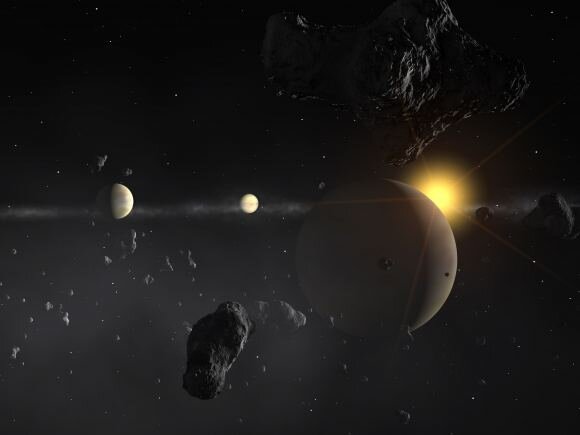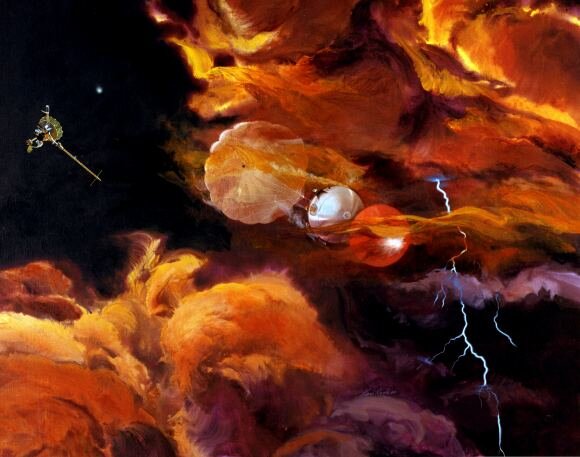Is the Possibility of Life in the Atmosphere of a Sub-Neptune Planet Viable?
Earth’s suitability for organic life suggests that other distant planets may also be teeming with life. However, proving this hypothesis poses a challenge. One effective method of discovering extraterrestrial life is to analyze the atmospheres of inhabited exoplanets. Yet, Earth’s relatively small size and thin atmosphere make it difficult to conduct such studies. Gas planets, on the other hand, offer a more favorable opportunity for atmospheric analysis. However, the question remains: can these gas planets actually support life? A recent publication in the journal Universe argues that they could.Exobiologists have long contended that we should not assume that all life in the universe will exist solely on Earth-like planets. For instance, the subsurface oceans of Enceladus and Ganymede, as well as Titan’s methane-rich chemistry, could potentially sustain unique forms of life. However, most theories about life necessitate three fundamental components: energy, water, and a surface.
The first two requirements are relatively straightforward. Life requires an energy source, whether it be solar or geothermal, and water serves as an ideal medium for complex molecular interactions. The necessity of a surface, however, is more nuanced. While it is not essential for life to survive, as many organisms can thrive solely in water or air, it appears to be crucial for life to originate. Surface chemistry excels at generating large organic molecules, even in the vastness of space. A rocky surface is likely necessary for the formation of life’s building blocks.This new research posits that while surface chemistry may be indispensable for the emergence of life within a planetary system, it is not necessarily required for life to flourish. The study focuses on warm sub-Neptune worlds, which are approximately eight to ten times more massive than Earth and are presumed to be gas planets lacking a terrestrial surface. Several of these planets have been discovered within the potentially habitable zone of their respective stars, such as K2-18b, which orbits closely around a red dwarf star.

The research team demonstrates that warm sub-Neptunes like K2-18b are likely to possess abundant water and organic molecules necessary for the formation of a habitable zone within their atmosphere. Due to their smaller size and gaseous nature, it is probable that the habitable layer remains relatively stable, allowing for the possibility of life to exist and reproduce before descending into the inhospitable depths below. Similar arguments have been proposed for the potentially habitable layer in Venus’s atmosphere. However, unlike Venus, K2-18b is unlikely to have a solid surface. Therefore, even if life were to survive on a sub-Neptune world, the question arises as to how it would have originated there.
In this regard, the team suggests that asteroids could potentially provide a solution. If an exoplanetary system possesses an unstable asteroid belt, it is plausible that meteorite impacts with both the sub-Neptune planet and smaller terrestrial worlds would occur frequently. This cross-pollination could potentially introduce life to a gaseous world.Considering that sub-Neptunes are relatively common and possess dense atmospheres, they are among the primary targets for studying signs of life. Although the likelihood of discovering life on these planets may be slim, it is still worthwhile to investigate given the available resources.
1. The team’s findings indicate that warm sub-Neptunes, such as K2-18b, are likely to contain ample water and organic molecules essential for creating a habitable zone within their atmosphere. These gas giants, being smaller in size, are expected to maintain a stable habitable layer, allowing for the possibility of life to exist and reproduce before descending into the inhospitable depths below. Similar arguments have been made regarding the habitable layer in Venus’s atmosphere. However, unlike Venus, K2-18b is unlikely to possess a solid surface. Therefore, the question arises as to how life could potentially reach a sub-Neptune world.
The team proposes that asteroids could play a crucial role in this scenario. In exoplanetary systems with unstable asteroid belts, frequent meteorite impacts with both the sub-Neptune planet and smaller terrestrial worlds could facilitate the transfer of life. This cross-pollination could potentially introduce life to a gaseous world.Given the prevalence of sub-Neptunes and their dense atmospheres, they are among the primary targets for studying signs of life. Although the chances of finding life on these planets may be slim, it is still worth exploring due to the available opportunities.
This article is republished from PhysORG under a Creative Commons license. Read the original article.
Do not forget to share your opinion with us to provide you with the best posts !




0 Comments